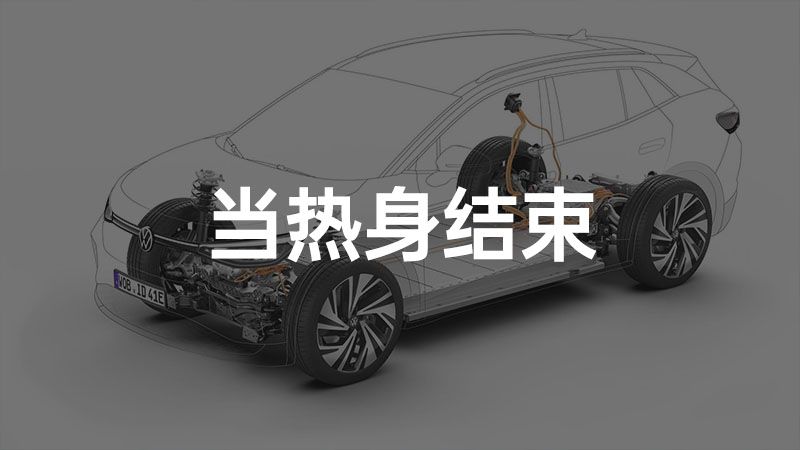Someone asked me a question: “If you had a budget of just over 200,000 RMB to recommend a pure electric SUV, is there a car that immediately comes to mind without hesitation?”
……
I hesitated because it seemed like there really wasn’t such a car.
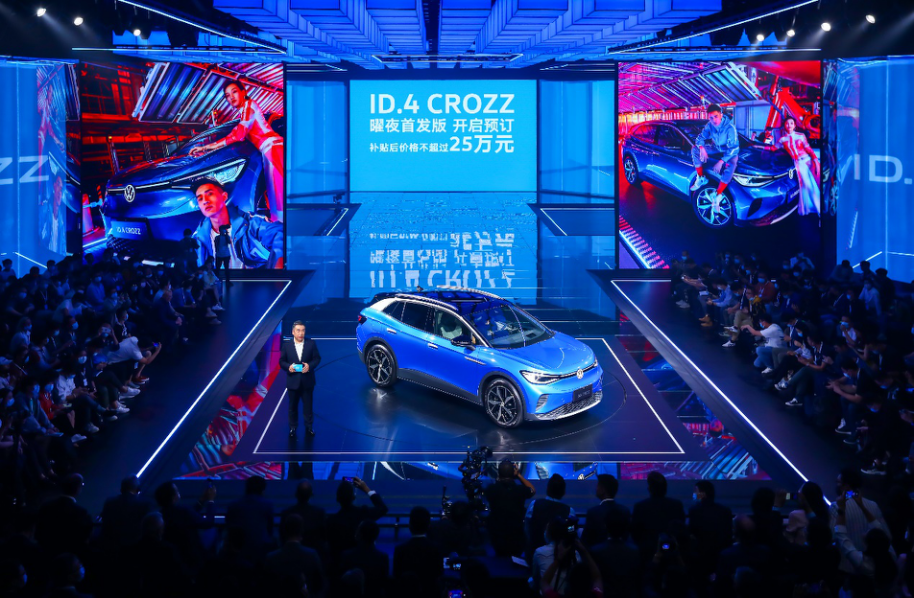
At the Volkswagen brand conference on November 3, when FAW-Volkswagen announced that the high-end version of the ID.4 CROZZ would be sold at a subsidized price of no more than 250,000 RMB, I realized that the answer to the previous question might have just appeared.
The New Series is Prepared
The ID.4 is the first product from Volkswagen’s MEB pure electric platform to hit the Chinese market, and it is also a product produced locally in China. From the product’s positioning to Volkswagen’s brand strategy, the ID.4 is a very special and important product.
Naturally, Volkswagen invested a lot of effort into developing this product.
MEB: Tried and True
MEB is an acronym for “Modularer E-Antriebs-Baukasten” in German, and translates to “modular electric drive matrix” in English. It is a highly compatible modular platform developed by Volkswagen for pure electric vehicles.
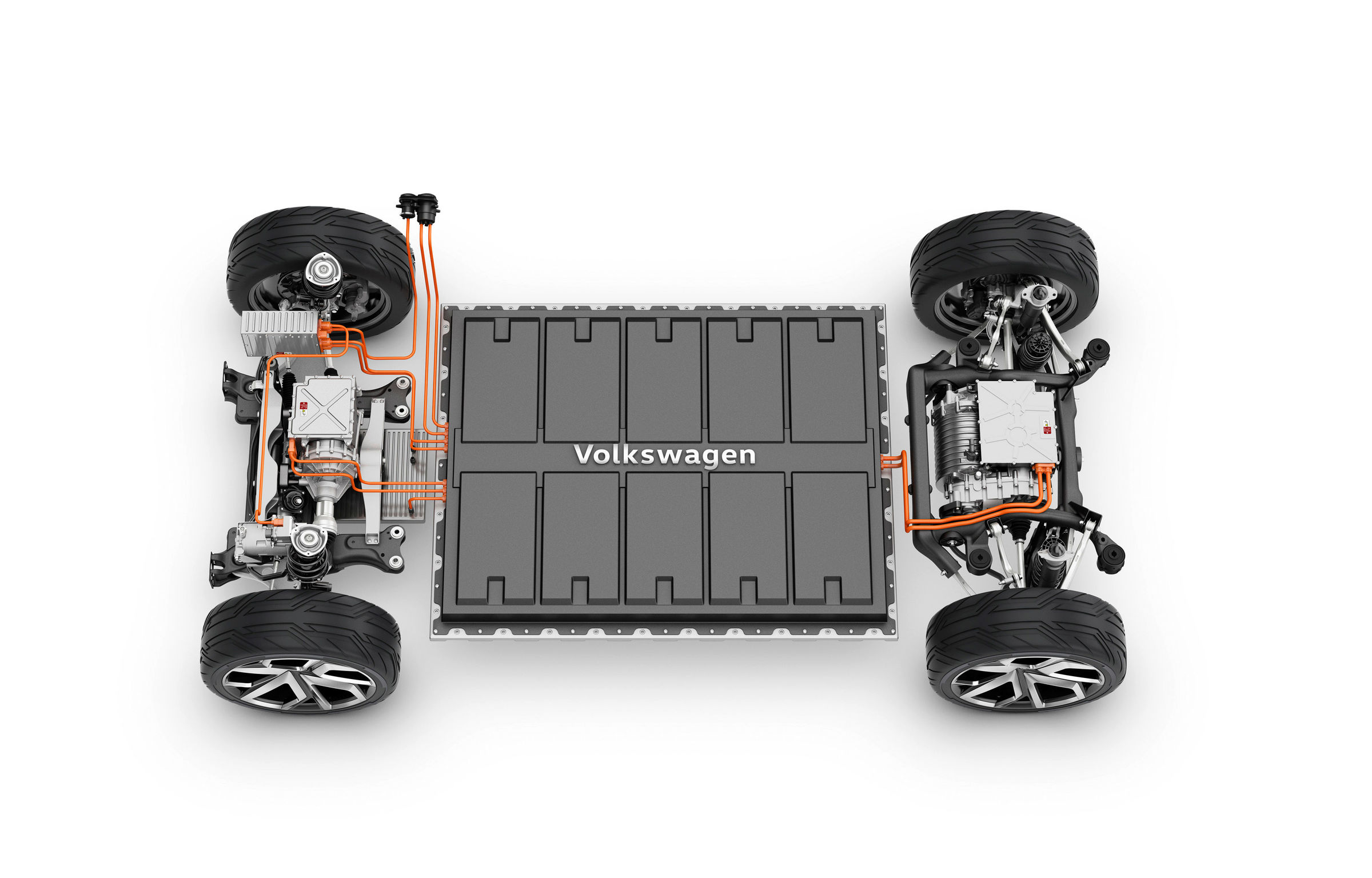
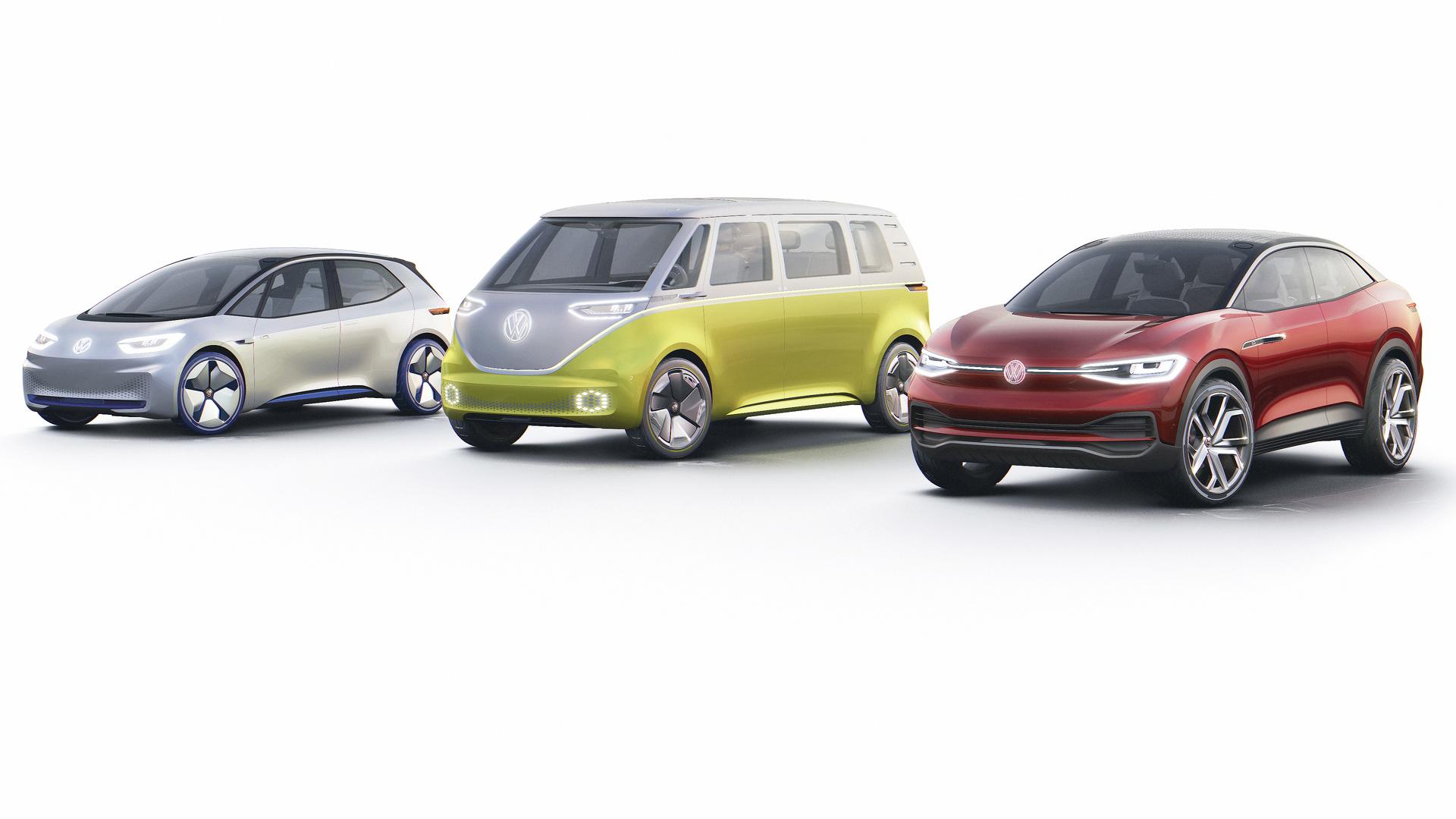
Even though this was Volkswagen’s first time developing an electric platform, the goal of platform-based vehicle manufacturing remains unchanged.

The two core objectives for developing MEB are written in bold blue font at the top of this Volkswagen official PPT slide, which are to “make electric cars cheaper and more commercially valuable for consumers”.
The PPT also highlights 6 key points about MEB on the right-hand side:
- MEB’s concept is to optimize user benefits and lower the cost of electronic components
- MEB: Economies of scale through MEB’s mass production across the entire group
- “Designed for Manufacturing”: Higher production efficiency and shorter production time
- Lower material and distribution costs
- Significantly reduces differentiation
- Suppliers can participate early in the processVolkswagen Group’s positioning of the MEB platform is “the MQB of the electric era,” making it a platform tailored for mass markets.
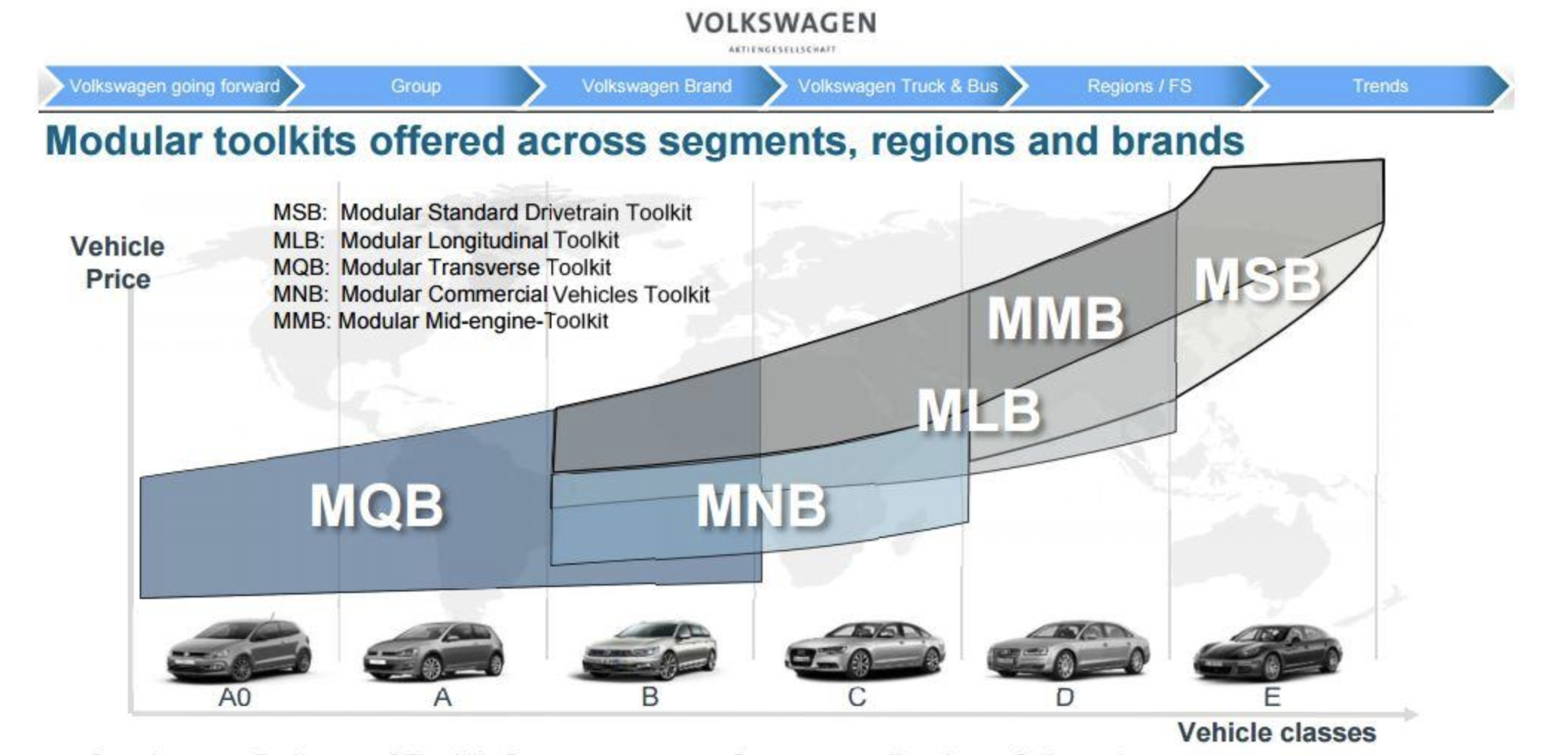
The MEB platform “accommodates” various vehicle types including sedans, SUVs, wagons, MPVs, and more. Everything from the small ID.3 to the large ID.BUZZ will be based on the MEB platform.
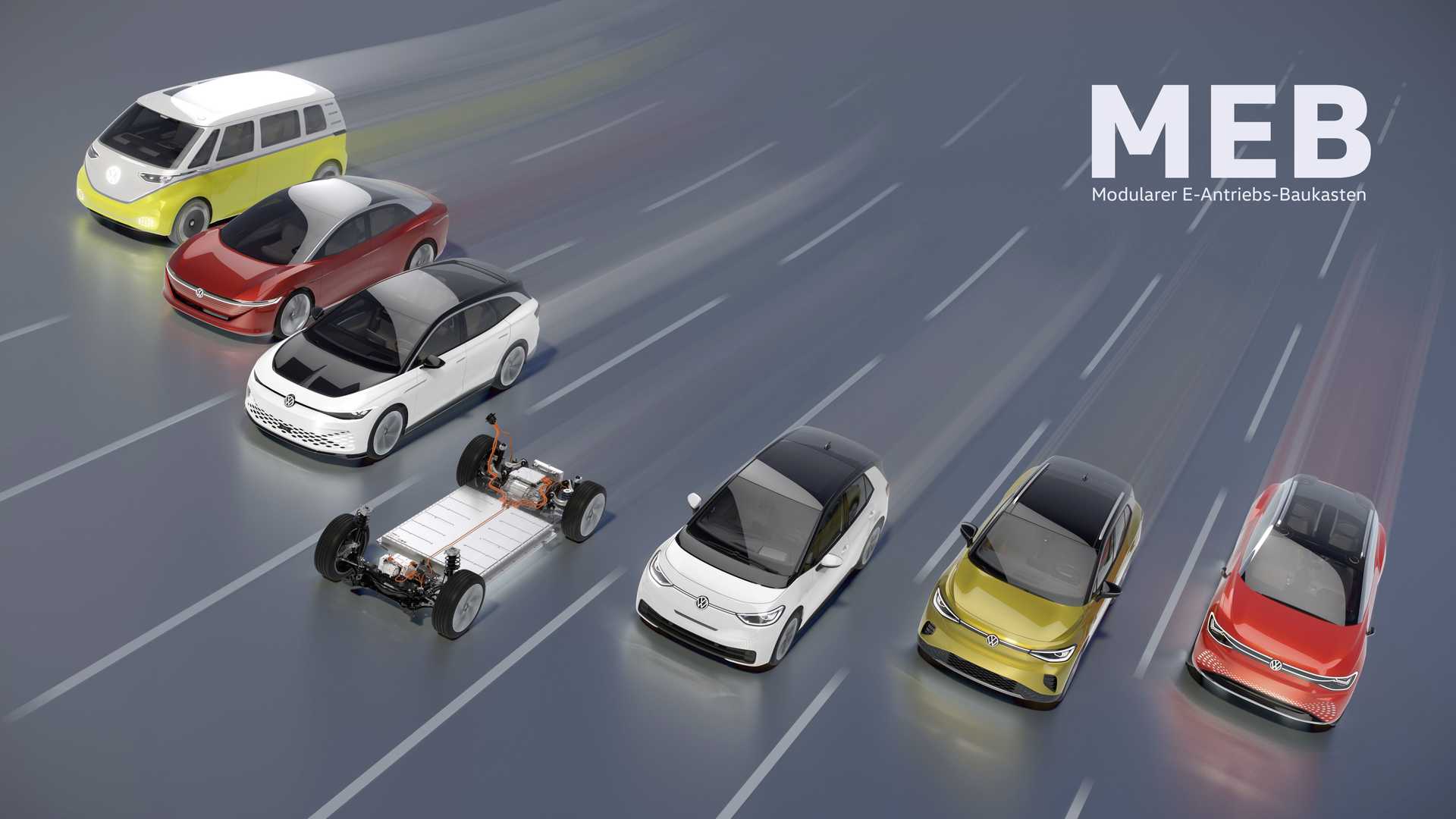
There’s a comment I recall reading somewhere which I’m not sure who said: “Nowadays, all companies claim to be pure electric platforms, but they actually only use one or two cars. How can they be considered platforms?”
Regarding the scale of MEB models, I found the following statement on Volkswagen’s official website:
“By 2022, the four Group brands Volkswagen, Audi, SEAT and ŠKODA plan to be producing 27 MEB models.” By 2022, Volkswagen, Audi, SEAT, and ŠKODA under the Volkswagen Group will have a total of 27 MEB models planned.
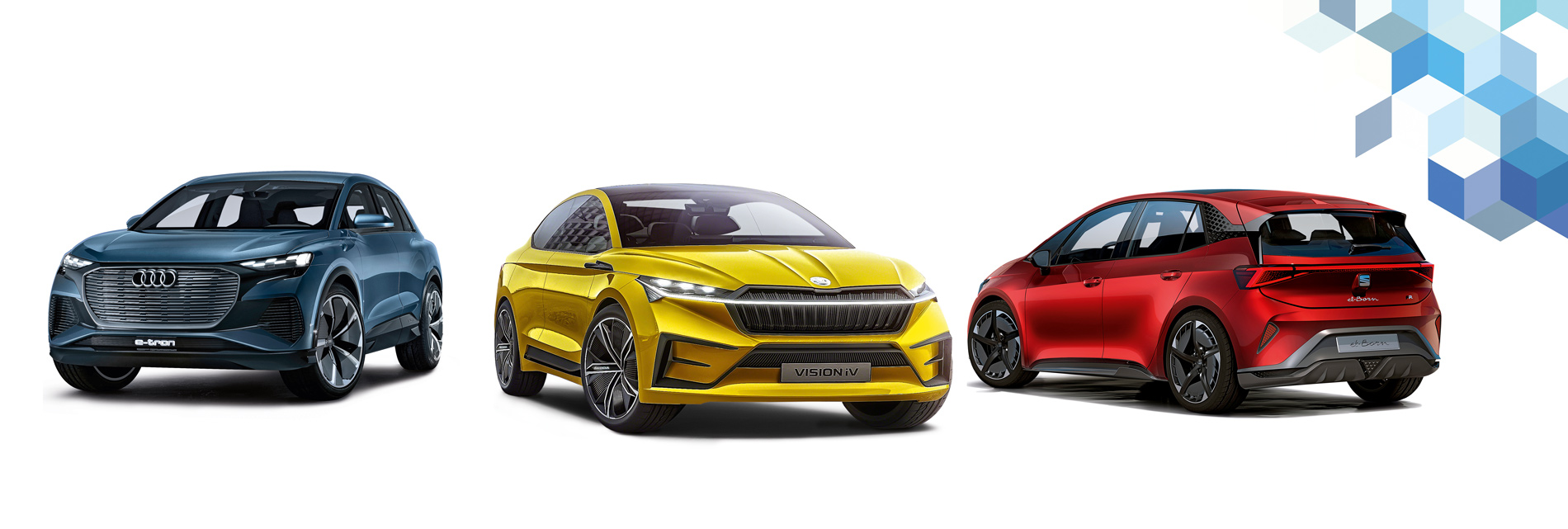
During the era of traditional fuel vehicles, Volkswagen was alone in platform production.
Model platforms such as MQB, MLB, and MSB helped the Volkswagen Group reduce costs and increase efficiency in developing and producing vehicles across sizes, types, levels, and even brands.
Therefore, this time Volkswagen is once again playing its ace in car platform production on the route to electrification. This is not only a “repeat of old tricks,” but also a “specialty.”
The first product to launch in the Chinese market under the electric lineup is the FAW- Volkswagen ID.4 CROZZ, which can be regarded as a pioneer of the MEB platform, and for good reason.
ID.4 CROZZ: Better than going solo
First, let’s take a look at the data released during the ID.4 CROZZ launch event:
- 4592 * 1852 * 1629 mm (length, width, height), 2765 mm wheelbase
- 2130 kg curb weight
- 84.8 kWh battery capacity, 175 Wh/kg battery pack energy density
- Rear-wheel-drive version has maximum power of 150 kW and maximum torque of 310 N·m.- The maximum power of the four-wheel drive version is 225 kW, and the maximum torque is 460 N·m.
- NEDC range is 555 km.
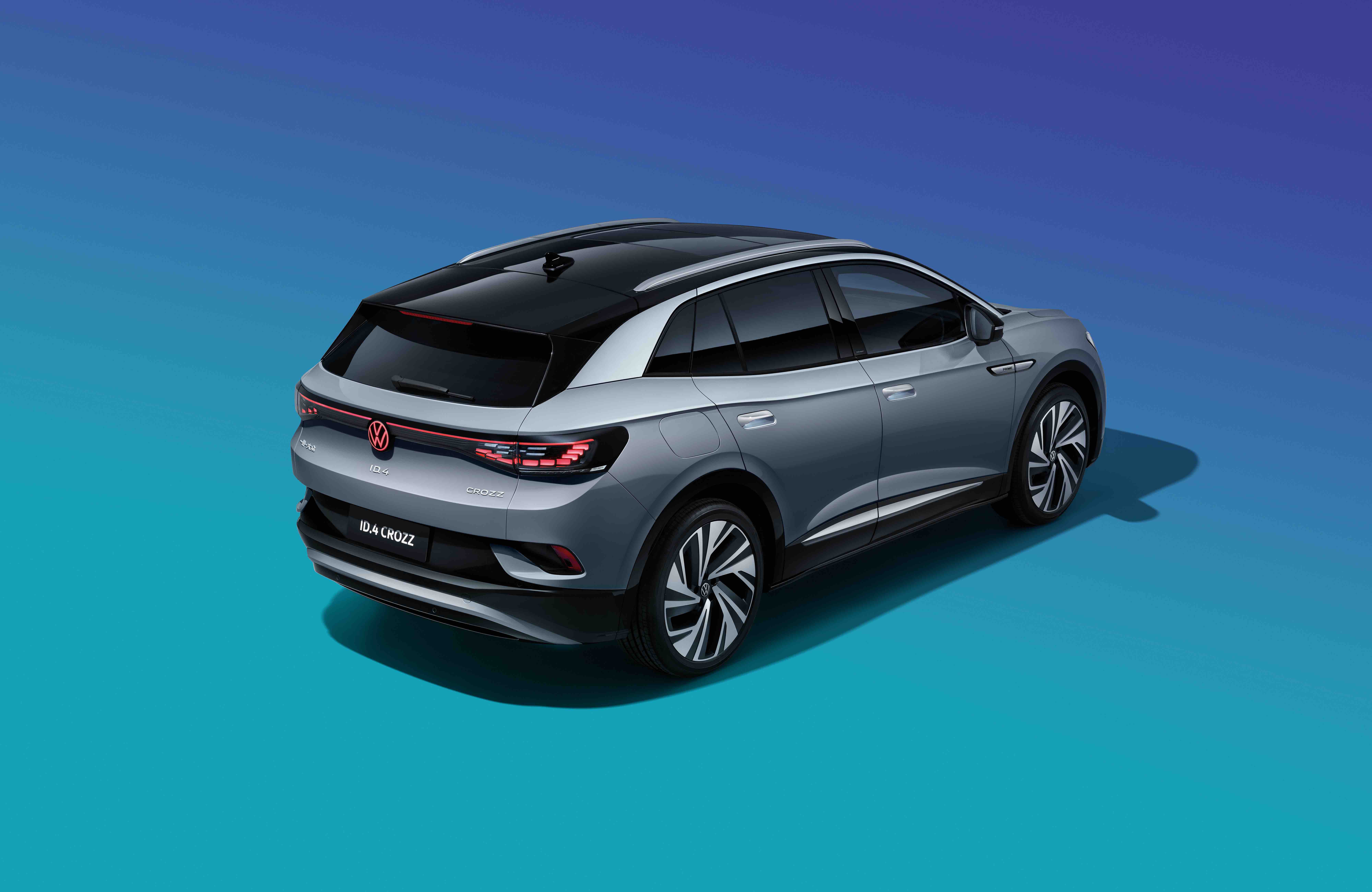
As a pure electric SUV of this level, all the above data of the ID.4 CROZZ are above average. Moreover, thanks to the MEB pure electric exclusive platform, the space development utilization rate of the ID.4 CROZZ is very considerable, and the 4.6-meter body has a 2765mm over-standard wheelbase.
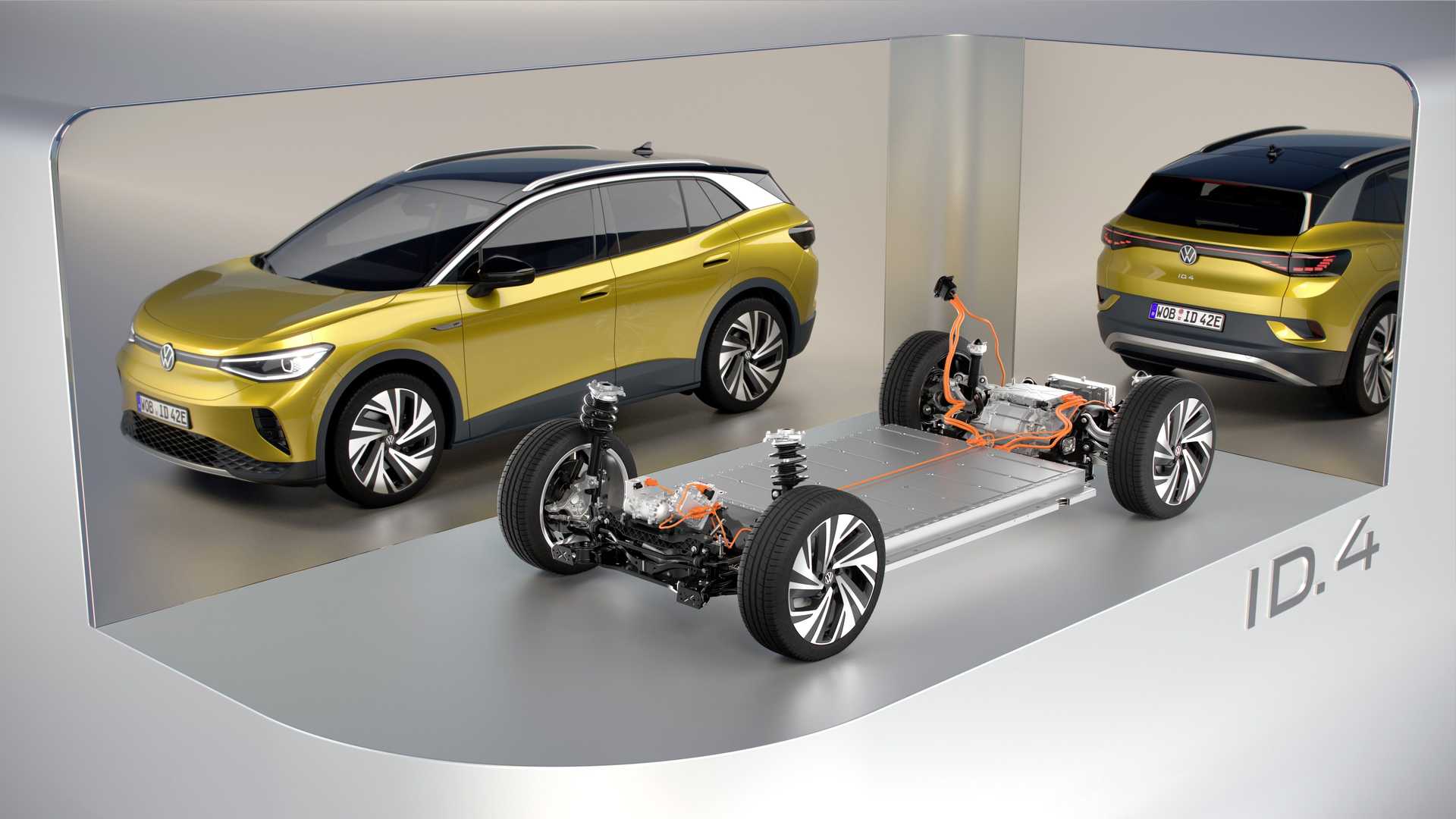
The longer wheelbase not only brings more interior space to the ID.4 CROZZ, but also allows it to accommodate a large 84.8 kWh battery provided by CATL, with a corresponding NEDC range of up to 555 km, which may not be the best among the same level cars, but it is definitely excellent.
In addition, considering the needs of users in low temperature areas, the ID.4 CROZZ is equipped with a CO2 heat pump this time. According to official data, this configuration can help the ID.4 CROZZ reduce its power consumption by 3 to 4 kWh per 100 km under low temperature conditions.
As a pure electric vehicle in the 200,000 yuan range, both range and space are not a problem for the ID.4 CROZZ. However, the ID.4 CROZZ has more than that.
Also thanks to the MEB platform, which was designed to be 100% electric from the beginning, the ID.4 CROZZ is not restricted by any fuel vehicle’s layout. This also enables the single-motor model of the ID.4 CROZZ to be made as rear-drive rather than just converting the front-rear drive layout of most fuel-electric conversion products.
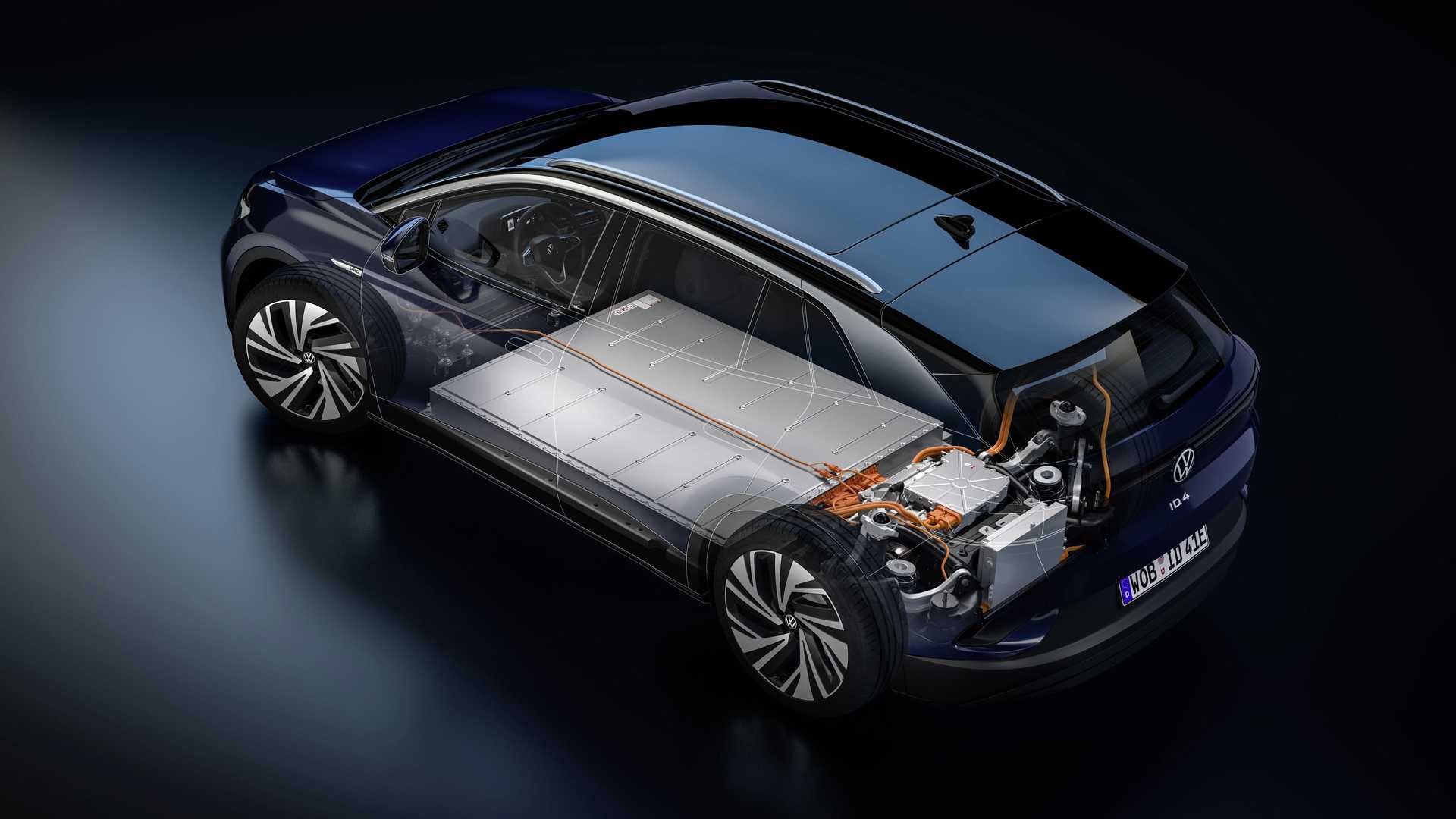
For an electric vehicle with enormous torque, rear-drive provides a significant improvement in driving experience.In a group of electric cars I drove before, which are all front wheel drive and even with many of them having power outputs of just slightly over 100 kW, the front wheels would almost always slip when starting off, providing a very unpleasant experience. However, this is due to the structure of front wheel drive and to avoid slipping, you would have to change to toothed gear shock absorbers and high-performance tires.
Conversely, my colleagues’ Model 3 and P7, both rear wheel drive cars, with power outputs of around 200 kW, require much less attention on this issue and you can step on the accelerator pedal confidently.
Apart from the single motor rear-wheel drive version, there is also a dual motor all-wheel drive version of the ID.4 CROZZ, with a corresponding power output of 225 kW and a 0-100 km/h acceleration time of 6 seconds.
Furthermore, the ID.4 CROZZ is equipped with DCC dynamic suspension, which is exclusive to the ID.4 CROZZ and not available on the ID.4 X.
“What is ID.?” you might ask. ID. stands for “intelligent design, identity, and visionary technologies” – a combination of intelligent design, identity and forward-looking technology – which is the meaning behind Volkswagen’s naming of the ID. series.
Moving on to the exterior, I personally appreciate the design of the ID.4 CROZZ. Compared to the ID.4 X, the exterior of the ID.4 CROZZ is almost identical to that of the European version of the ID.4.
Firstly, even though the ID.4 under the pure electric platform is an SUV, it still has a low and sleek look that is very comfortable at first glance. The relatively short front and rear overhangs, combined with the longer wheelbase, create a very beautiful side profile proportion for the vehicle – in short, it has a “good figure”.
The design of the rear of the ID.4 is very simple, with the contours on different heights being predominantly flat line, resulting in a low visual center of gravity that corresponds to the overall design language of the rear end.
The taillights of the ID.4 feature a 3D, multi-piece matrix LED design which exudes a technological feel that is emblematic of the digital age.
The signature front grille of the ID.4 features a closed design. However, it is not as extreme as Tesla’s simplified approach, making it more visually appealing to a wider audience.
Similarly, the headlights feature a continuous light strip in place of chrome accents, providing a modern, digital touch. The ID.4’s headlights move dynamically as part of a short welcome ceremony upon starting the vehicle.
The exterior of the ID.4 demonstrates a departure from previous Volkswagen models, offering a distinctive design with a recognizable “ID.” series look. Nevertheless, the ID.4 still appears conservative, which is characteristic of Volkswagen’s tendency to avoid design mistakes.
The interior of the ID.4 CROZZ maintains a similar aesthetic to the exterior, with a small gauge and a large central screen exuding Volkswagen’s characteristic “non-offensive” style.
Overall, the ID.4 features a design that is fresh, high-tech, and thoughtful, with the Chinese market receiving the exact same design as the European version of the ID.4 CROZZ.# ID.4 CROZZ
ID.4 CROZZ introduces a never-before-seen multifaceted gear design on the right side of the instrument, compared to the gear lever in the armrest area, I prefer the multifaceted gear design.
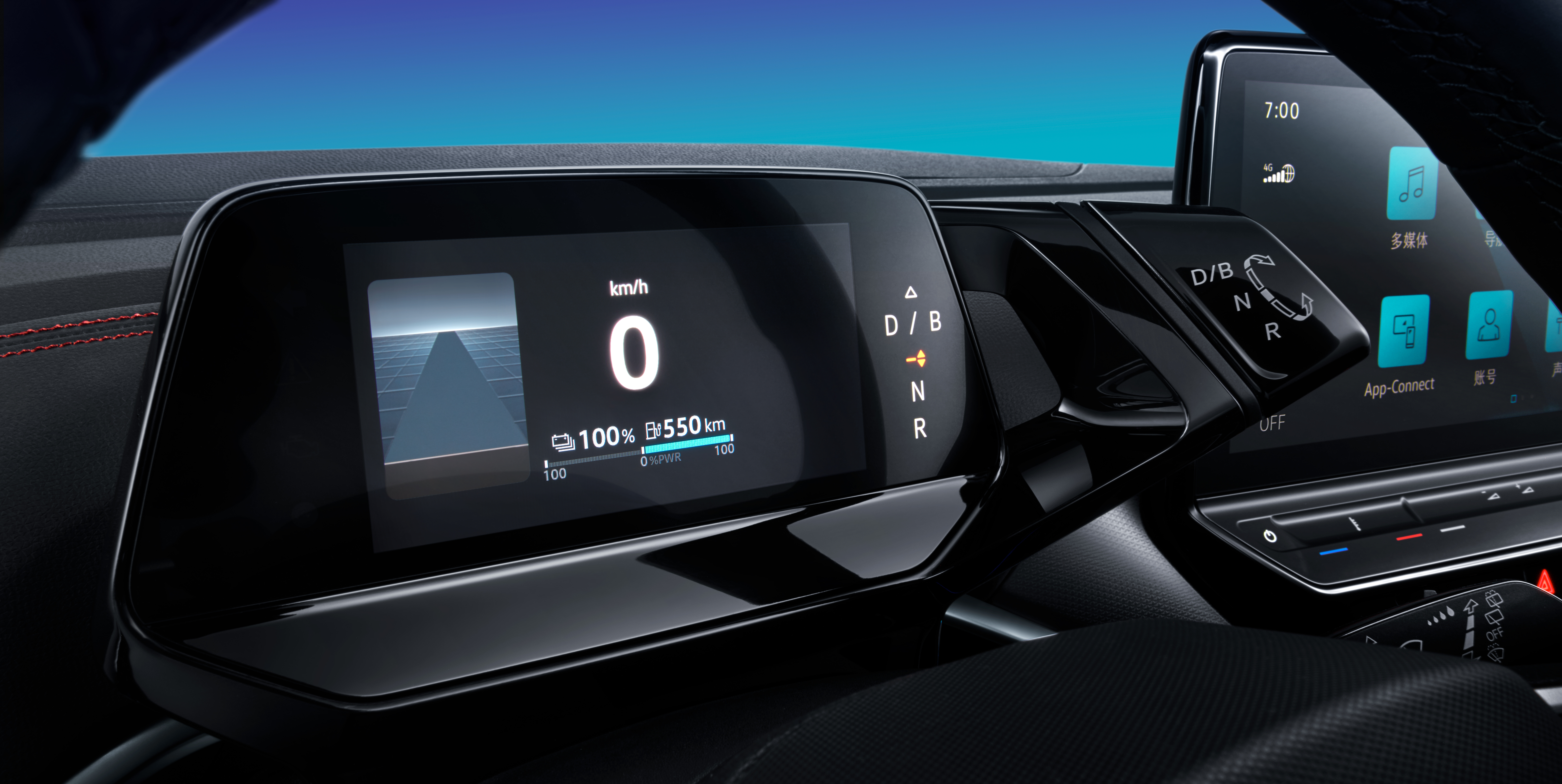
But have you noticed anything special about the silver trim on the front passenger side?
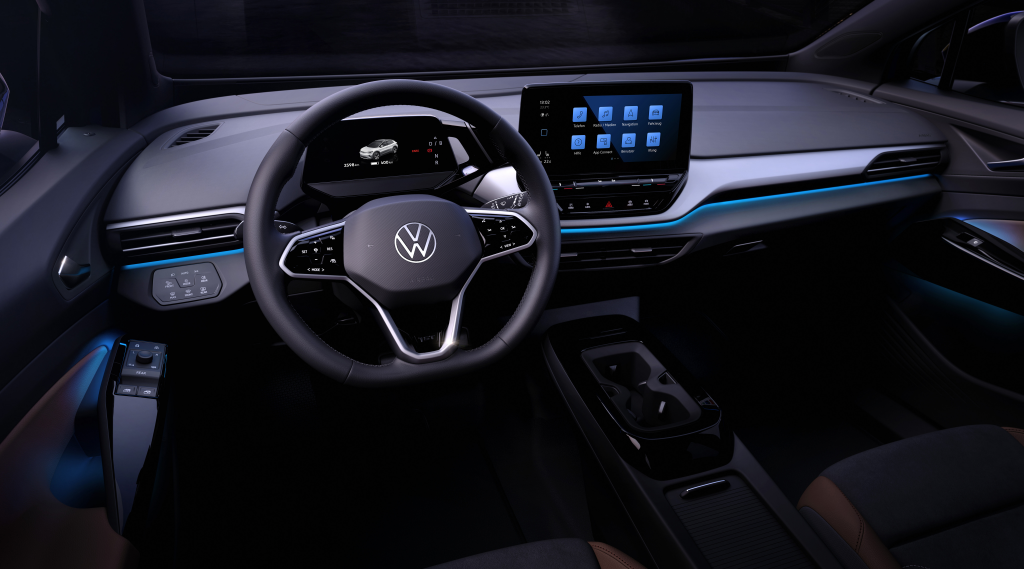
At first, I didn’t notice it either, but ID.4 CROZZ “hides” an atmosphere lamp with customizable colors in the front passenger area. It’s hard to notice when it’s not lit up, but when it’s turned on, it’s a wave pattern composed of vertical bars, still in digital style.
Speaking of lights, ID.4 CROZZ also places an “ID.Light” on the windshield that has interactive prompts, and its effect can be seen in this official Volkswagen demo video.
But the most impressive thing in the car is the cool AR HUD.
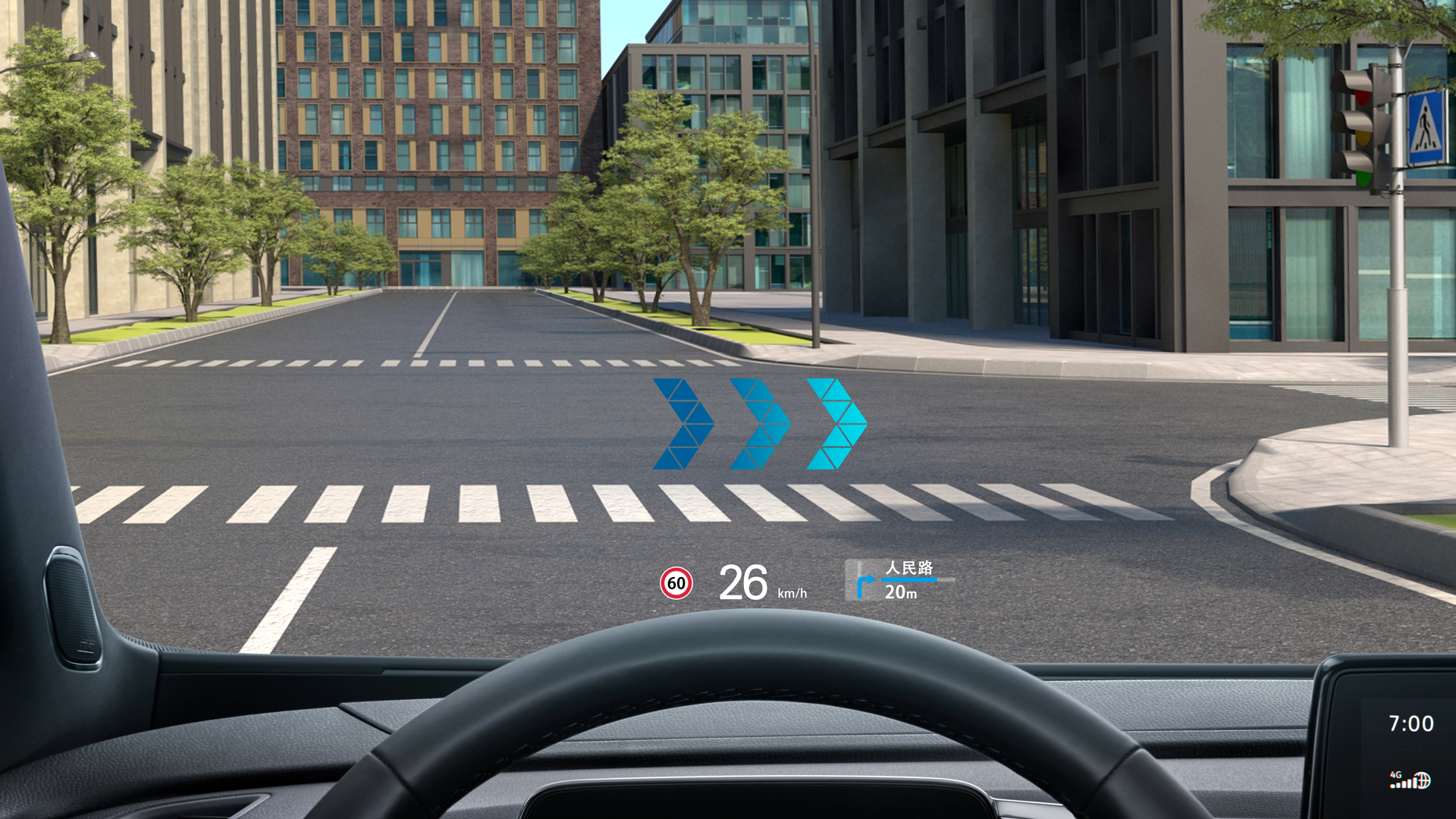 Different from the AR displayed on the car infotainment screen, the AR image of the ID.4 CROZZ is directly projected onto the windshield through the HUD. Its functions include navigation, ACC driving distance display, lane departure warning, and so on.
Different from the AR displayed on the car infotainment screen, the AR image of the ID.4 CROZZ is directly projected onto the windshield through the HUD. Its functions include navigation, ACC driving distance display, lane departure warning, and so on.
There are not many domestic materials available for this AR system, and I have found the official introduction video of the AR HUD on the ID.3.
When it comes to assisted driving, the ID.4 CROZZ’s assisted driving sensors consist of 5 cameras, 3 millimeter-wave radars, and 8 ultrasonic radars.
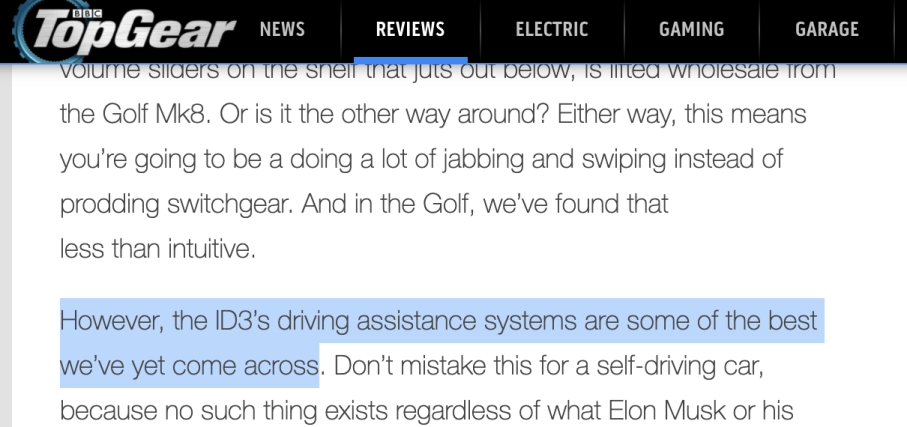
TopGear gave high praise to the ID.3’s assisted driving system during a test drive, which raised my expectations for the ID.4 CROZZ in this aspect. As for the performance of this car, we need to wait for the experience after its launch.
Therefore, after looking at the exterior and interior design and various small features, I think the significance of “ID.” can be more easily understood as “the iconic element of Volkswagen electric vehicles.”
Modern, simple, digital, intelligent, and most importantly, an easily acceptable scale.
Looking back at this section, the ID.4 CROZZ has done well in space, endurance and three-electricity, interior and exterior design, and intelligent configuration. Compared with traditional Japanese and American brands, Volkswagen’s efforts in these areas are visible to the naked eye. The corresponding product strength on paper is also good, and the actual experience is worth looking forward to.
Intelligence: The Market Needs to Prove It
The first batch of ID.3 users in Europe provided some feedback that the car was good, but the software was not perfect and there were some small bugs.
Currently, the Volkswagen ID. series does not support FOTA, but the ID. series under the E3 electrical architecture has the hardware capability to do so. In communication with Volkswagen, they also indicated that this function is still being optimized and verified, and consumers will have to wait a little longer.
In terms of assisted driving, the ID.4 CROZZ’s assisted driving sensors consist of 5 cameras, 3 millimeter-wave radars, and 8 ultrasonic radars.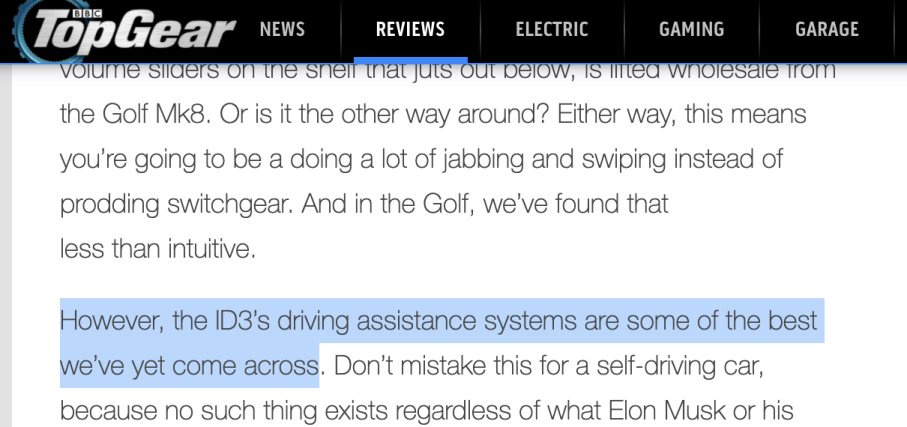
TopGear gave high praise to the ID.3’s driving assistance during its test drive, which raised my expectation for this aspect in the ID.4 CROZZ.
In China, Volkswagen plans to expand its local intelligentization team, the “Advanced Driver Assistance Systems Excellence Center,” from 150 to 500 members, in order to provide further localized improvements for China’s more complex road conditions.
As for Volkswagen’s soft power, I think we don’t need to rush to conclusions now. We will have our own conclusion after experiencing the ID.4 CROZZ upon delivery. However, based on various factors, the ID.4 CROZZ series still has a high level of product strength worthy of anticipation, which is a crucial first step.
This is transformation and also a blow by downgrading
As a traditional industry giant, Volkswagen may be a little unfamiliar with software, but when it comes to car manufacturing, Volkswagen returns to its own territory. For many restrictions and challenges for new forces, Volkswagen has huge advantages.
Currently, Volkswagen has five MEB factories worldwide, two in Germany, one in the United States, and two in China. One of them is the FAW-Volkswagen Foshan plant.
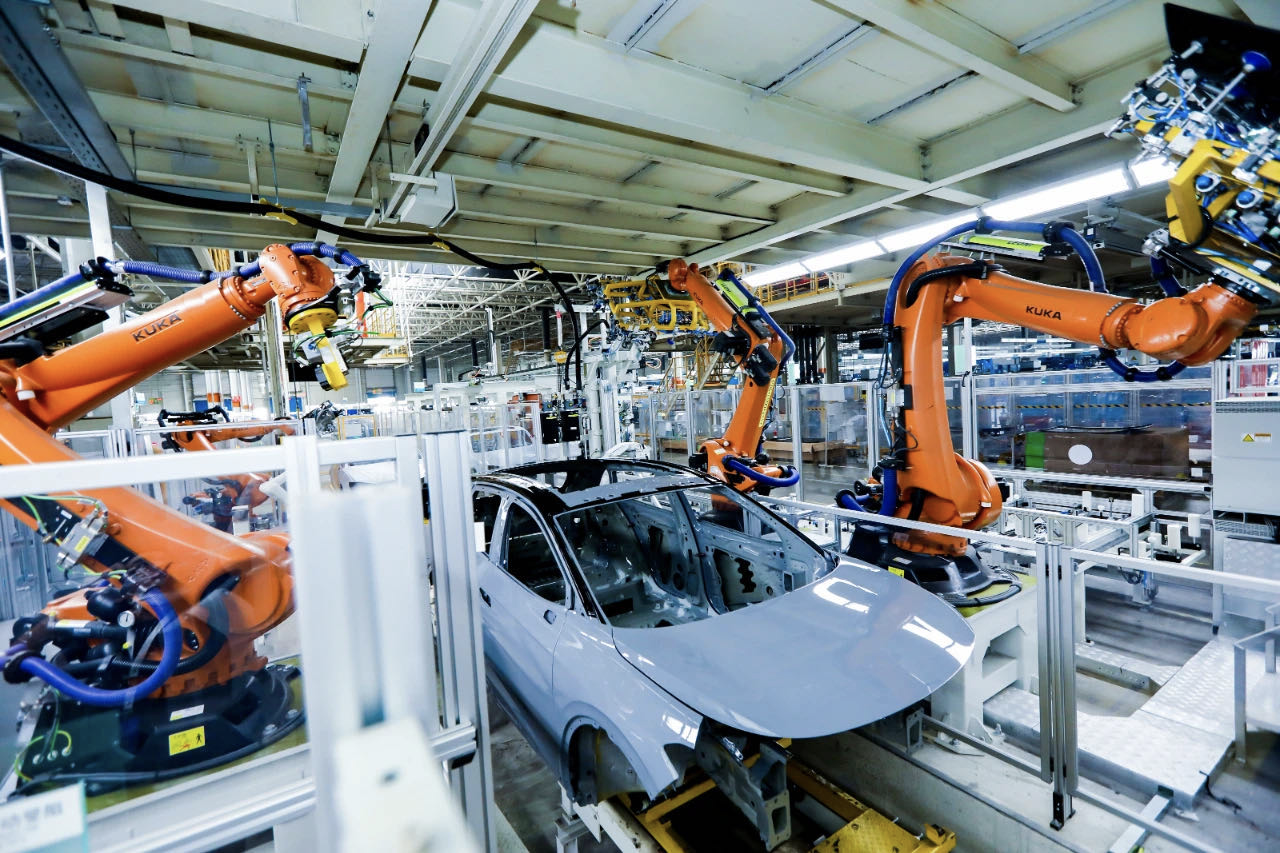
1269 KUKA industrial robots, 90% welding automation rate, 100% main welding automation rate, 100% painting automation rate, and 1um paint film detection accuracy are all examples of the Foshan plant’s strong industrial level, but they are not the focus.
The MEB production line at the Foshan plant was renovated on the basis of the original factory. After renovation, MEB models produced in the factory will be produced on the same line as FAW-Audi models, which actually places high demands on the factory’s flexible manufacturing ability.
The MEB platform was designed from the beginning for mass production. But what you may not have expected is that the MEB production line renovated by the Foshan plant has an annual production capacity of 300,000 vehicles.
This data is more than the combined production capacity of the three new forces and exceeds the planned production capacity of 150,000 vehicles per year in the first phase of Tesla’s Shanghai plant.
Behind this is FAW-Volkswagen’s massive supply chain system accumulated over many years. Selling a large number of vehicles is not a very difficult task for FAW-Volkswagen. It is highly unlikely that customers will have to wait half a year to receive their cars.
Following this is FAW-Volkswagen’s huge dealership network.After years of accumulation, the distribution resources of FAW-Volkswagen have spread to cities of all sizes throughout China. Such an extensive distribution network means that ID.4 CROZZ is likely to be the pure electric vehicle that Chinese consumers can most easily access in offline stores.
In addition, the sales model of ID.4 CROZZ this time is no longer the traditional dealership model but the direct sales agency model. This change allows for a more transparent pricing of the ID series, and a closer distance between the manufacturer and the user.
Moreover, the “inherent advantages” of the FAW-Volkswagen system enable ID.4 CROZZ to be on the market immediately after the “menu” is announced, and available all over the country. For competitors, this will be an undeniable blow.
Electric Vehicles Sold to the Public
While other manufacturers are trying hard to define the user portrait of their own electric products, geeks, early adopters, tech enthusiasts, etc., Volkswagen hasn’t put much effort into this.
This is because Volkswagen doesn’t want the ID series to be a product labeled with a specific user group. Its target audience is everyone.
This is also why ID.4 CROZZ does not have a very radical but still aesthetically pleasing interior and exterior design. Although it is rear-wheel drive, it has ample interior space, it doesn’t have a large center console screen blocking the view, but rather is equipped with AR HUD, and it still has a heat pump on top of the already existing 84.8 kWh large battery.
In terms of driving experience, cruising range, space, and technology, ID.4 CROZZ has demonstrated a huge “coverage” of product strength.
On this basis, the price of around 200,000 becomes an additional lever for the balanced product power, magnifying its competitiveness once again.
At a price of 200,000, ID.4 CROZZ and its own fuel model Touareg can be compared in the same price range. Previously, almost all electric models of traditional manufacturers were more expensive than their equivalent gasoline models, even e-Golf.
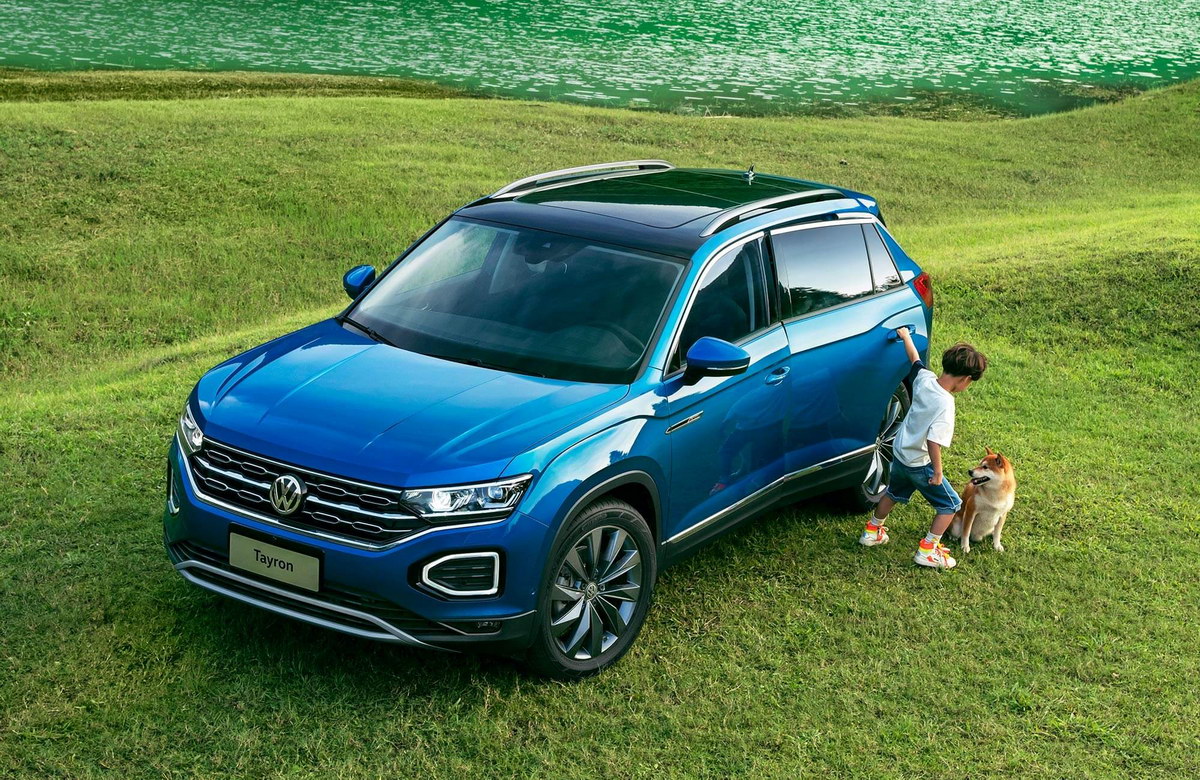
Only with similar purchase costs can the lower usage costs of electric vehicles truly impress consumers.
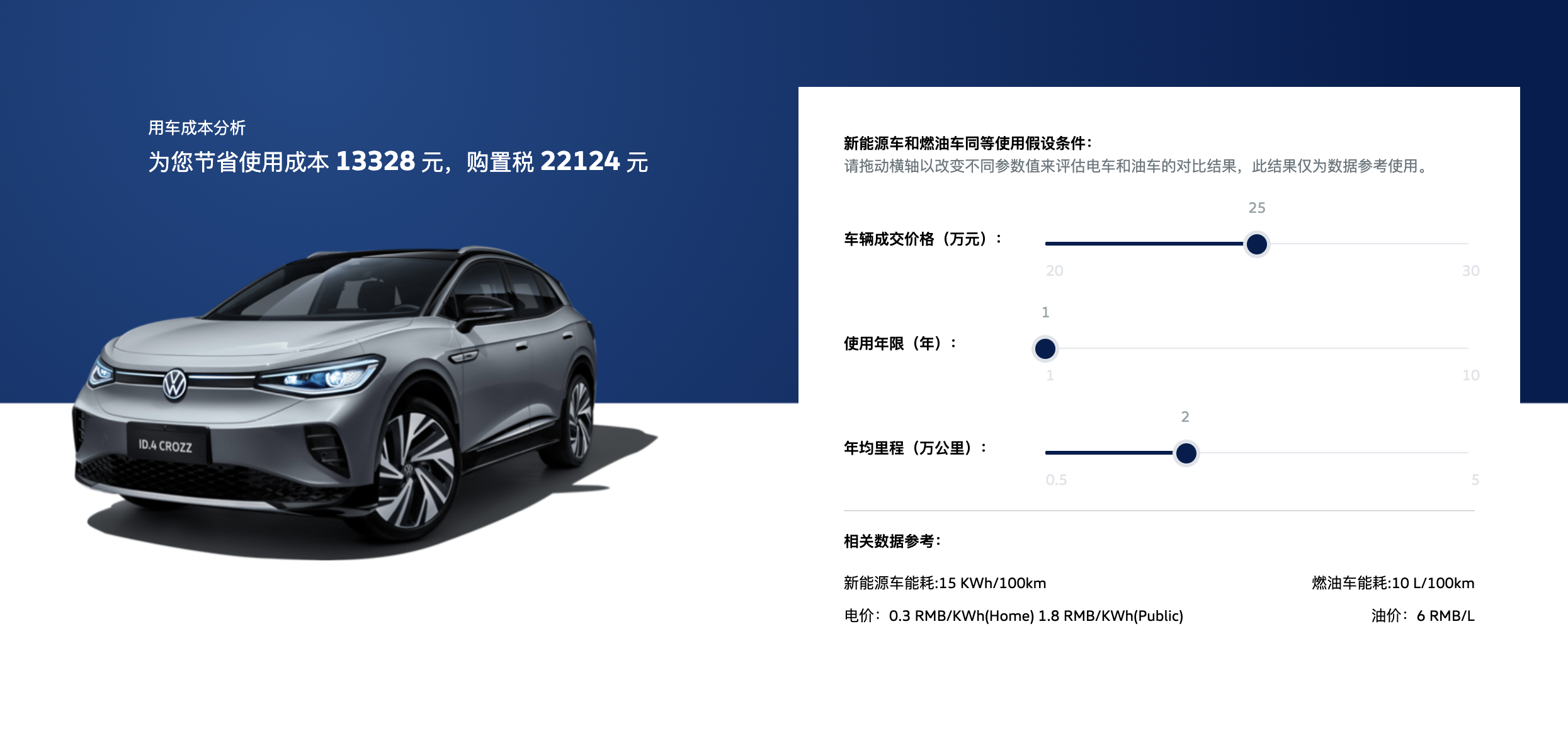
Don’t forget, ID.4 CROZZ is a Volkswagen.As a manufacturer in the T1 joint venture, FAW-Volkswagen has experienced battles in the market segment around 200,000 yuan. For Chinese consumers, Volkswagen is one of the options that cannot be avoided when the budget comes to around 200,000 yuan.
This is actually the invisible ace of the ID.4 CROZZ.
FAW-Volkswagen has once again put the ID.4 CROZZ in their own best territory, not to make a show, but to defend their title.
“Traditional” should be a neutral term
I believe many people will use BBA’s previous pure electric SUV as an example to prove that traditional car companies cannot handle electric vehicles.
However, after driving these models, I found that these products are not so unbearable. In terms of driving performance, they all have mechanical qualities far beyond all new forces. However, these cars all have shortcomings in range and a price that is not much lower than their equivalent fuel-powered counterparts.
It can be said that the long and short of EQC are both due to “traditional”.
But the ID.4 CROZZ is different from them.
First, it is a 100% pure electric model, and ID.4 CROZZ does not have the shortcoming of range that traditional brand electric vehicles have.
Under this premise, it still has the positive label of traditional manufacturers in mechanical quality tuning and product reliability.
And the price of the ID.4 CROZZ is the same as the SUV models of FAW-Volkswagen at this level. Buying an electrified model from FAW-Volkswagen does not require you to pay any extra cost.
“Now that you have a car, what about charging?”
At the ID.4 CROZZ launch event, Volkswagen also announced that CAMS will achieve saturation coverage in 7 electric vehicle core cities nationwide, realizing a supercharging station every 5 kilometers. By the end of this year, 255 stations with 1,800 dual-gun DC piles will be established in 16 cities.
And all these charging piles are high-power piles of 120 kW and 180 kW.
This plan is really amazing, so much so that I had doubts at the time whether the numbers on the PPT were written incorrectly.
However, on November 27th, CAMS had established 100 supercharging stations and 1,025 charging piles in 20 cities nationwide. The loud and ambitious speech at the press conference has quickly landed.
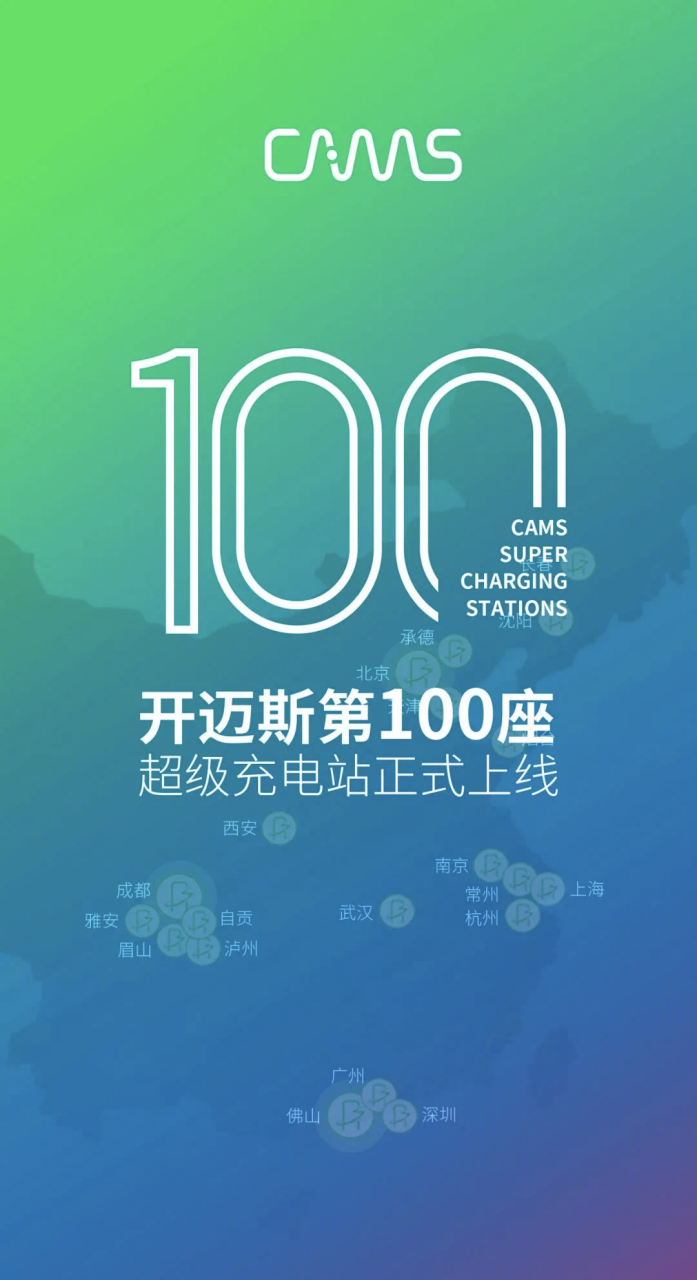
This is the power of this “traditional” manufacturer, Volkswagen.
From electrification transformation to MEB platform to E3 electrical architecture to self-developed software, Volkswagen has done many things that revolutionize their own destiny, and they have succeeded and failed.
But the key is “the direction is right”.For this company, the filter of “traditional manufacturer” in the eyes of consumers will not disappear for ID.4 CROZZ. However, after seeing that Volkswagen has done so many things right, I believe that “traditional manufacturers” will have a new understanding of Volkswagen’s electrification with the delivery of ID.4 CROZZ and the further coverage of CAMS charging network.
As the mobile phone industry has transformed from feature phones to smartphones, both Motorola and Nokia declined, but Samsung survived by striving to innovate.
The automotive industry is currently experiencing a similar situation, and I cannot say who will become Nokia. However, based on the current situation, Volkswagen, which is the representative of the era of gasoline-powered cars, is very likely to continue being the Volkswagen of the era of electrification.
This article is a translation by ChatGPT of a Chinese report from 42HOW. If you have any questions about it, please email bd@42how.com.
